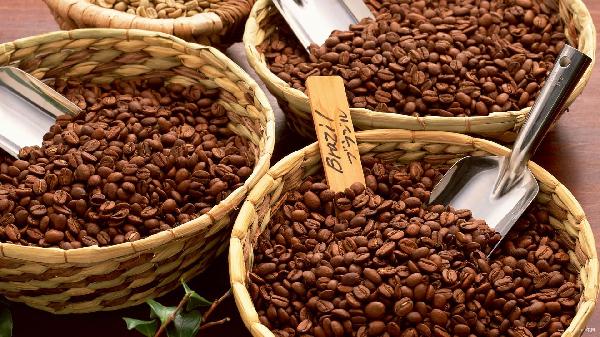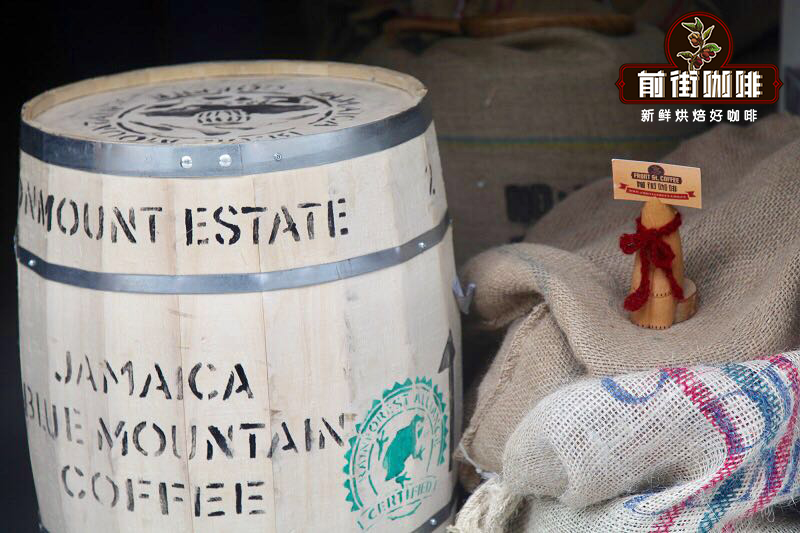How much caffeine does a cup of coffee contain? Will low caffeine taste better?

For professional baristas, please follow the coffee workshop (Wechat official account cafe_style)
How much caffeine a cup of coffee contains, in addition to the variety of coffee beans, mainly depends on the roasting time and extraction time of coffee beans. In the way of coffee, as long as you master the variables that affect the amount of caffeine, you can drink delicious coffee in the right situation and mood.
1. Variety of coffee beans: Arabica bean vs. Robusta bean
In addition to having something to do with personal physique, caffeine content has a lot to do with the variety of coffee beans. Generally speaking, the cost and price of robusta beans is lower than that of Arabica beans, so most canned coffee on the market will choose or mix robusta beans, but people who are worried about excessive caffeine should be aware that Robusta beans are cheap, but the caffeine content is three times that of Arabica beans!
100% of the ecological green coffee beans are Arabica species, and caffeine is less than 12mg / g, which is already a low caffeine variety. This is why drinking a cup of high quality ecological green Arabica coffee can make the editor relax to yawning and sleepy.
So how much caffeine does a cup of coffee contain?
On August 1, 2006, the Taiwan Consumer Protection Association launched a "caffeine grading system for hand-mixed drinks", including espresso or other types, to remind consumers of the caffeine content of each cup of coffee according to the color differences of red, yellow and green. Among them, red is 200-300 mg or more, yellow is 100-200 mg, green is less than 100 mg, while the caffeine content of ecological green is about 120-125 mg, which belongs to the yellow standard.
Note: the total amount of caffeine intake per person per day does not exceed 300mg (Ministry of Health and Welfare documents, refer to EU standards)
Coffee roasting degree: shallow roasting vs deep roasting
Caffeine content is inversely proportional to baking degree.
Generally speaking, the deeper the coffee roasted, the lower the caffeine content of the lightly roasted coffee. Because caffeine is attached to the water of coffee beans, and as caffeine is roasted at high temperatures, the water will evaporate into gas, so light-roasted coffee has more caffeine and tannins than deep-roasted coffee because of shorter roasting time and lower temperature.
However, there is another saying that caffeine is actually very stable in the process of baking beans, and caffeine will not evaporate until the roasting temperature is above 237 ℃, but under normal baking, it is impossible to bake to such a high temperature, generally shallow to medium roasting takes place at about 192 ℃ to 208 ℃, and re-roasting comes out before about 230 ℃ to avoid fire. As a result, the content of caffeine remains almost unchanged before and after baking, and some people mistakenly think that heavy-roasted coffee is bitter and has more caffeine, which is not true. On the contrary, because heavy-roasted coffee beans have softer fibers and more pores than light-roasted beans, it is easier to extract water-soluble caffeine.
Third, the way of brewing coffee
The content of caffeine is proportional to the extraction time of coffee.
Generally speaking, coffee contains different amounts of caffeine depending on the way it is brewed and the use of tools. Therefore, the longer the coffee powder is soaked, the more caffeine will be released, in other words, the coffee extracted for a long time will increase the caffeine content.
People usually mistakenly think that espresso has higher caffeine because of its strong concentration and strong flavor, but in fact, espresso is extracted by high pressure in a very short time (within 30 seconds). Compared with hand brewing, French pressure, Saifeng and other caffeine extraction time, in fact, the caffeine content will be higher than espresso.
So, if you want to be full of energy all day,
Then you should come and make yourself a cup of coffee!
Does decaf coffee taste good?
Coffee contains caffeine is a fact, drink coffee, you should drink natural. Therefore, the editor advises everyone not to drink decaf and decaffeinated coffee. According to EU standards, decaffeinated coffee is defined as having no more than 0.1% caffeine by weight of raw beans. Starbucks' standard is to remove less than 3% of the original content, which can only be called decaf, not decaffeinated coffee.
How do you make decaf coffee?
Generally speaking, low-caffeine refers to the separation of caffeine from coffee beans before they are sent to the roaster, but low-caffeinated coffee is not 100% decaffeinated and can only remove 94% of the caffeine and 98% of the caffeine. it still contains 2%, 6% residual trace caffeine.
At present, the methods of removing caffeine are mainly divided into dissolving method, Swiss water treatment method and carbon dioxide extraction method.
I. solvent extraction
Coffee beans are softened, then heated with high-temperature and high-pressure steam to expand the bean surface and increase the contact area, then the dichloromethane (CH3CI) solvent is poured into the bean to contact the solvent to extract caffeine. In this method, dichloromethane is used to adsorb bean surface to dissolve caffeine, but it does not affect the flavor of coffee beans.
II. Swiss Water treatment method
After the coffee beans are soaked in warm water, after caffeine and other ingredients are dissolved in the water, the caffeine in the essence is filtered with activated carbon, and then the non-caffeinated essence is introduced back to the previous coffee beans, allowing the beans to reabsorb the lost ingredients. This method emphasizes that caffeine is not extracted with any chemical solvents, although it is not extracted with chemical solvents, some of the ingredients of the coffee are also filtered by activated carbon, resulting in the loss of some flavor of the coffee, not only that, the low-caffeinated coffee produced by this method is also expensive.
III. Carbon dioxide high pressure extraction
When roasting coffee beans, there is a large amount of carbon dioxide (CO2). At this time, the carbon dioxide is treated under high pressure to become liquid, and then poured into the processed coffee beans to remove caffeine, and then the pressure is released to convert the carbon dioxide into gas volatilization. The removal of caffeine in this way will not cause damage to the coffee beans, the color will not change, and it is not easy to extract substances other than caffeine, so it can retain the original flavor of the coffee beans, but it needs a large amount of investment equipment because it needs a special high-pressure environment. Therefore, the amount of low-caffeinated coffee extracted in this way is less than that seen on the market.
No matter which one is used, the industrial process of removing caffeine from coffee beans is very expensive, and the carbon dioxide and organic solvents that flow through the beans will wash away the aroma of the coffee by the way. the flavor of coffee beans is more or less destroyed in the process.
Although many people choose non-caffeinated or low-coffee coffee because they are worried that they will not be able to sleep or have palpitations, and worry that caffeine will temporarily prevent calcium absorption, the editor reminds everyone that in addition to choosing coffee with good quality Arabica beans, as long as the coffee powder is soaked in water for too long and the coffee powder is too fine, it will not extract too much caffeine.
In addition, caffeine is not responsible for calcium loss and osteoporosis, because caffeine is a water-soluble substance, as long as we eat enough water, caffeine will soon be excreted from the body. Combined with proper sun exposure and exercise, we can enjoy the benefits of coffee while maintaining good health and a happy mood.
Important Notice :
前街咖啡 FrontStreet Coffee has moved to new addredd:
FrontStreet Coffee Address: 315,Donghua East Road,GuangZhou
Tel:020 38364473
- Prev

Authentic Jamaica Blue Mountain No. 1 Coffee Bean Story Flavor Taste Characteristics What Grade How to Distinguish between True and False Blue Mountain Coffee Brand
Professional barista communication, please pay attention to coffee workshop (Weixin Official Accounts cafe_style) Blue Mountain coffee origin in which country first, Blue Mountain no brand, to see the estate name Blue Mountain is a region of Jamaica, producing the best Blue Mountain Manor is the most famous Wallenford is also the most famous
- Next

To get the most out of caffeine, it's important to drink it at the right time!
Professional barista communication, please pay attention to coffee workshop (Weixin Official Accounts cafe_style) Do you like a cup of coffee in the morning to wake up sleeping insects and double your work efficiency? But American neuroscientists say it's more important to drink it at the right time if caffeine is to have the greatest pick-me-up. When you wake up at 8 to 9 a.m. every day, your body has high levels of cortisol, a hormone that plays a role in
Related
- Beginners will see the "Coffee pull flower" guide!
- What is the difference between ice blog purified milk and ordinary milk coffee?
- Why is the Philippines the largest producer of crops in Liberia?
- For coffee extraction, should the fine powder be retained?
- How does extracted espresso fill pressed powder? How much strength does it take to press the powder?
- How to make jasmine cold extract coffee? Is the jasmine + latte good?
- Will this little toy really make the coffee taste better? How does Lily Drip affect coffee extraction?
- Will the action of slapping the filter cup also affect coffee extraction?
- What's the difference between powder-to-water ratio and powder-to-liquid ratio?
- What is the Ethiopian local species? What does it have to do with Heirloom native species?

